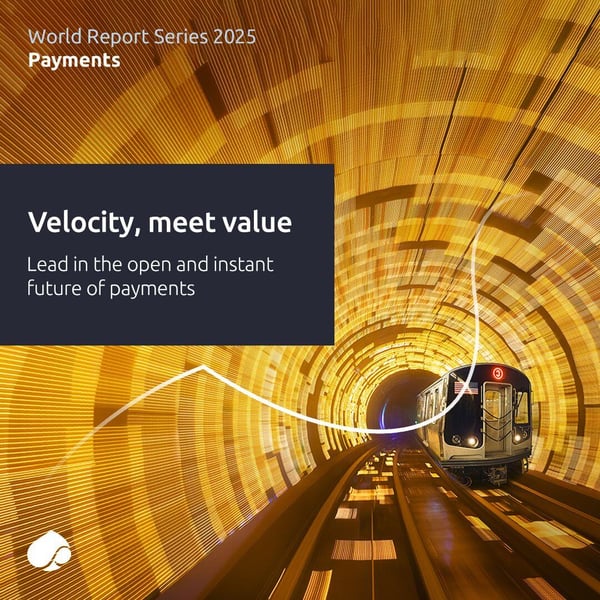Embedded Finance. It remains on every industry prediction and trend. Very often associated with lofty revenue opportunities for those who prevail.
But has it happened yet? Who is winning? What exactly is it?
As a specialist provider of Embedded Finance (EF) solutions to banks, at BankiFi we look at the opportunity EF presents for incumbent financial institutions.
Embedded Finance 101
EF is not a new phenomenon. You might have used financing when buying a sofa or owned an airline branded credit card.
But endless tech innovation is taking EF digital, to the extent that, the industry consensus is that financial services will become embedded in digital ‘platforms’. But who will own the platforms from which financial services are consumed?
Embedded Banking as you (probably think) you know it (EBAYKI).
.png?width=600&height=478&name=trends%20and%20predictions%20blog%20-US%20(3).png)
The proliferation of e-commerce, GAFA (sadly not Guardiola, Arteta et al, but Google, Amazon, Facebook and Apple) and other such platforms have changed how consumers spend their digital lives and how organisations run their business.
View my bank balance in a social media reel? Submit the company’s weekly payments run at the click of a button from Microsoft Teams? Admittedly, extreme examples, but you get the picture. Contextual banking where convenience is provided by taking financial services to where the user already is.
But what role will banks play? Hold that thought…
.png?width=600&height=478&name=trends%20and%20predictions%20blog%20-US%20(4).png)
Embedded Banking, but not as you know it (EBNAYKI).
The other school of thought is that banking will continue to be carried out where it traditionally has been, namely in online and mobile banking channels, aka 'conscious banking'.
For this model to even compete, let alone prevail, banks must embed features and workflows that consumers and businesses have come to expect from the use of other platforms. This is sometimes referred to as Embedded Fintech.
Book your next holiday from your banking app? Do invoicing and accounting from internet banking? This is also known as BaaP. Not something you might eat your morning bacon in, but Banking-as-a-Platform.
.png?width=600&height=478&name=trends%20and%20predictions%20blog%20-US%20(2).png)
The term super app has also been used in this context before. Whilst I strongly believe there should be a clear line drawn of where services offered by banks end, I can’t deny that ‘super app’ helps to neatly articulate how Online and Mobile Banking channels become the platform.
Are you intrigued to dive deeper into the concept of Embedded Banking but Not As You Know It? We've created and launched a Whitepaper - entitled just that - to help you get a better understanding of EBNAYKI, its wider context and the implications of Embedded Banking on bolstering bank-to-SMB relationships. Tap below to download.
How should banks be thinking about Embedded Finance?
In short, some already are, and some have been for a long time. Apple famously partnered with Goldman Sachs to make Apple Card available to U.S. consumers. I will soon be able to invest via Nutmeg directly from my Chase UK banking app.
So, where to start?
I start by breaking the opportunity down into three segments: corporate, SMB and consumer. My own professional experience stems from 12 years in corporate payments and SMB banking, so I don’t focus on consumer.
Economies of scale vs customer ownership
The immediate attraction of model 1 (EBAYKI) for banks is the economies of scale offered by third-party platforms with very large and captive potential customer bases. Embedding financial services in the right platforms can reduce a bank’s acquisition costs and accelerate revenues.
Music to any bank’s ears, you would imagine. What’s the catch?
In my eyes, that depends on the segment. Many corporates are already embracing the opportunities presented by EBAYKI. Corporate and treasury banking relationships often go deep, meaning third-party platforms pose no competitive or dilutive threat to the bank’s relationship with the customer. In fact, it’s the exact opposite.
Having banking and payments from your treasury bank embedded into a preferred platform, such as a procure-to-pay provider, is a capability that corporates (who are very familiar and comfortable with APIs) demand from their bank. I’ve frequently seen integration to specific platforms mandated in RFPs. Once embedded, it also makes the customer relationship and revenue much ‘stickier’ for banks because volumes and depth of integration make the bank much harder to dislodge. In short, EF is a no brainer for all parties.
The situation is less straightforward with SMB banking. Banks can’t rely on the same depth of relationship, meaning they face a difficult trade-off. Platform economies of scale still apply, however at much greater risk of relationships and revenues being eroded and lost. In an SMB’s eyes, the third-party platform is perceived as providing all the value and their bank is reduced to a utility or data pipe that can be easily replaced.
Where does this leave digital banking channels?
Even if banks retain a SMB banking relationship, this disintermediation calls into question the relevance of internet and mobile banking.
Open Banking (regardless of whether it’s driven by regulation or the market) has proven a catalyst for this trend globally, but especially in Europe. Banks have been forced to surrender data to third parties and are incurring significant costs to stand up a deposit account infrastructure and a digital channel (i.e. Open Banking consent screens) purely for someone else’s benefit.
For this reason, it is imperative for banks to have an Embedded Banking but not as you know it or Embedded Fintech strategy for SMBs. Much in the same way that banks have sought to achieve feature parity with neobanks in retail banking, this is now a table stakes strategy in commercial banking.
What about my ‘Embedded Banking as I know it’ strategy?
The global commercial banking revenue opportunities presented by EF ($124bn by 2025) are too great to ignore, but I would advocate proceeding with caution.
The biggest platforms offering the greatest economies of scale will naturally be drawn to the biggest brands. So all banks, regardless of size, should be thinking about how to compete on value and technology differentiation rather than price. Smaller, regional or community banks in particular run the risk of being left behind.
It’s also worth remembering that platforms can already access ‘transactional’ banking features in many markets via Open Banking. Banks should strongly consider value-add services built on transactional payment accounts as a premium offering to platforms.
This is where banks can consume Open Banking on behalf of platforms to their own advantage. Offering value-add services to platforms which are built on top of Open Banking actually reduces the competitive threat to banks’ SMB relationships, because banks retain brand visibility and relevance. Being able to reach any SMB, regardless of who they bank with, multiplies the platform economies of scale and acquisition opportunity. After years and millions spent on Open Banking compliance and regulation, it’s time to focus on the commercialisation opportunities.
Data, data, data…
The real value of an Embedded Banking (regardless of how you know it) strategy for banks is unlocking valuable access to data. Real time insights telling banks how SMBs manage their business and what their financing needs are, or more importantly, are likely to be. Turn your Embedded Banking strategy into a revenue generator.
The future is Embedded Banking, regardless of what you think it is…
My personal prediction for the coming years is that progressive-thinking banks and FIs will have, or should have, a strategy for both models
However, pursuing an Embedded Finance strategy at the expense of Embedding Fintech in your own digital channels should not be an option. Not investing in your own digital channels would be to question their very existence and the infrastructure, IT and people costs associated with maintaining them.
Doing nothing at all is worse still.
Want to meet with Nick?
If you're interested in learning more about our embedded banking solutions that can catapult your bank back into the heart of small businesses, click the button below to discuss your capabilities with our Head of Strategic Growth, Nick Reid.
.png)
.png)


.png?width=600&name=Rectangle%20316%20(3).png)
.png?width=600&name=Webinar%20assets%20(1).png)

